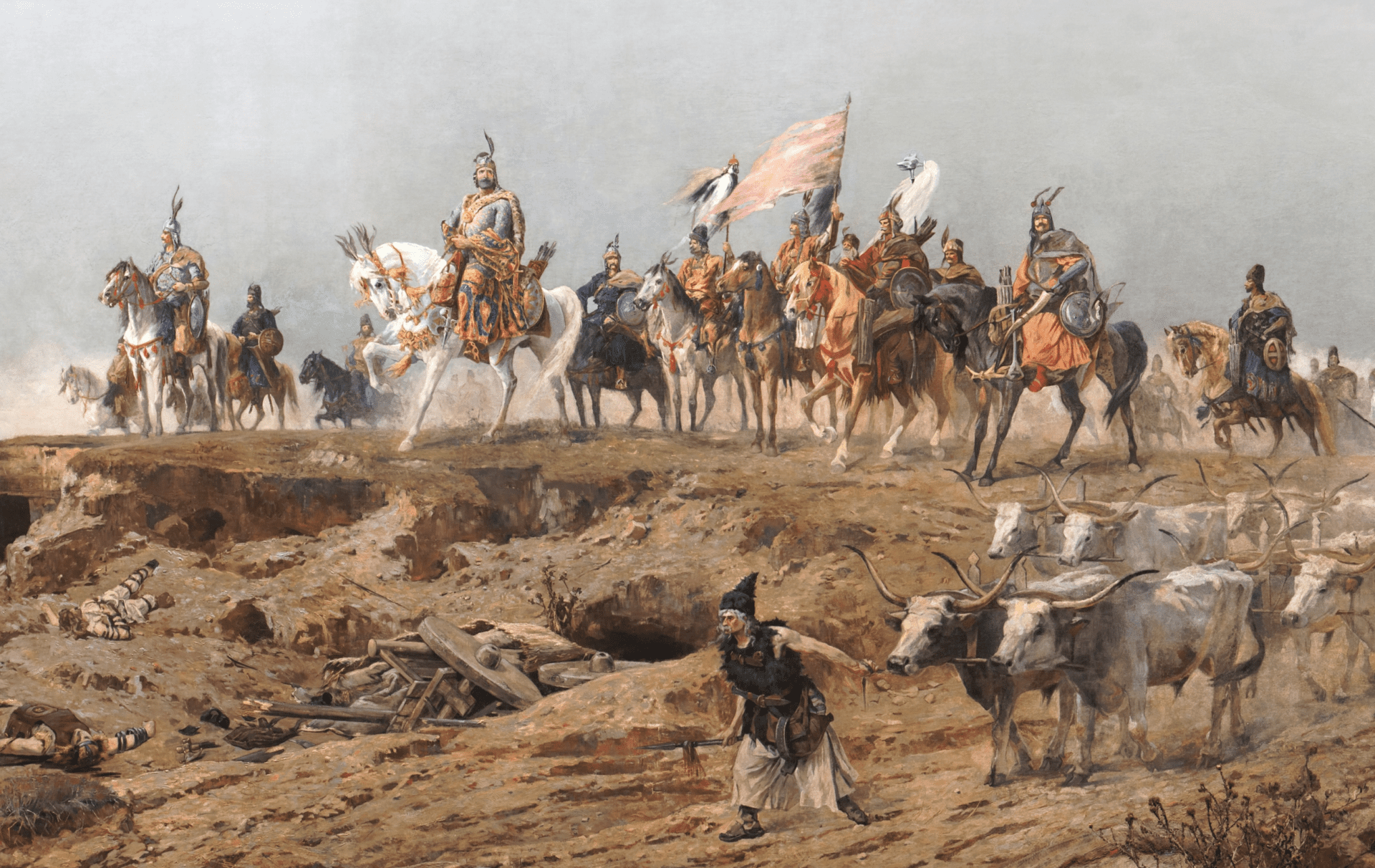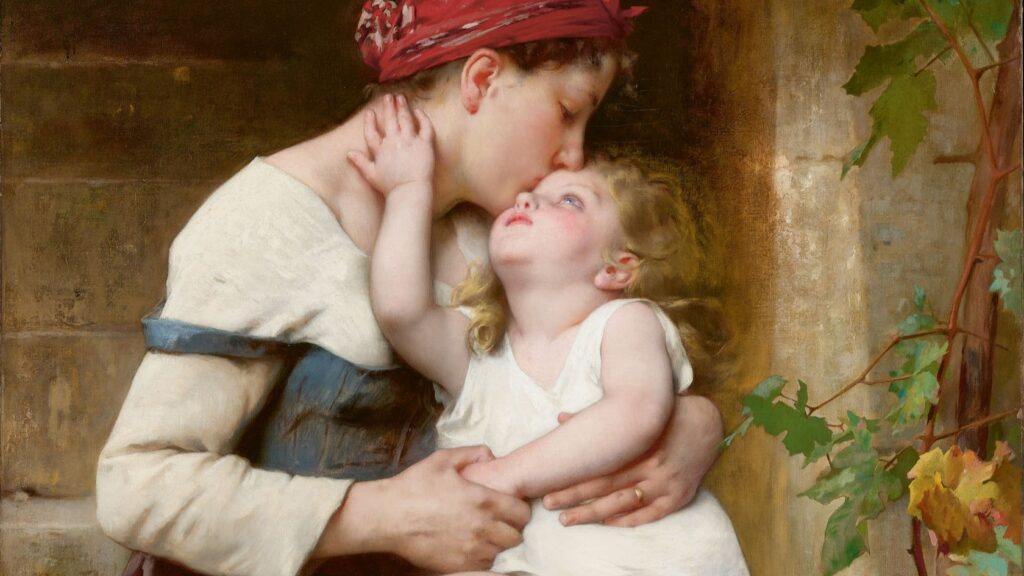The Arrival of the Hungarians, otherwise known as the Feszty Panorama or Feszty Cyclorama (Feszty-körkép), is a cyclorama, which is a circular panoramic painting. After two years of work, the cyclorama was completed in 1894 by Árpád Feszty and his assistants (more than twenty painters worked on the artwork). The panorama was made for the Millennium Celebrations of 1896 that were dedicated to the 1000th anniversary of the Hungarian conquest of the Carpathian Basin in 895–896. Since 1995, the cyclorama has been displayed at the Ópusztaszer National Heritage Park in Southern Hungary. The cyclorama, which is nearly 120 meters long and 15 meters tall, guides visitors through some imaginary episodes of the Hungarians’ arrival in the Carpathian Basin.
The Arrival of the Hungarians is undoubtedly one of the greatest works of national romanticism. The painting powerfully speaks of patriotism, of the greatness of Hungarian history, the love of the motherland, loyalty, and unity. The artwork is certainly one of the foundational paintings of Hungarian national identity and imagination. To strengthen visitors’ emotional connection with the heroic historical episode of the conquest, the artists wanted to engage viewers with the cyclorama. Therefore, an artificial terrain was created in front of the painting so that visitors can walk around in an environment similar to the painted one. Together with the realistic sound effects played by hidden speakers, visitors can feel like they are part of the painting, walking alongside the Hungarian conquerors into the Carpathian Basin. To increase the emotional appeal and authenticity of the painting, both the painted and the constructed landscape resemble the Verecke (Veretskyi in Ukrainian) Pass of the Carpathians (through which the Hungarians entered the Basin in 895), which the painter visited in preparation for his grand work. On the whole, the experience of visiting the panorama is overwhelmingly engaging and powerful.
As the Millennium Celebrations were coming up, the state financed many artistic projects dedicated to the settling of the Hungarians
The painter, Árpád Feszty (1856-1914) decided to paint the cyclorama after visiting The Defence of Champigny by Édouard Detaille in France. Initially, he wanted to paint the biblical flood, but his father-in-law, the famous Hungarian romanticist novelist Mór Jókai convinced him to paint an episode from Hungarian history. As the Millennium Celebrations were coming up, the state financed many artistic projects dedicated to the settling of the Hungarians, so Feszty could obtain the necessary funding for a Hungarian conquest-themed cyclorama. According to legend, when the canvas arrived from Belgium to the painter, his wife, Róza Jókai, a painter herself, fainted from the realisation of how much time and effort it would take to complete it in two years, by the deadline. Most probably, Róza Jókai also contributed to the painting, some of whose 2,000 characters were modelled after some of their relatives and friends. For example, the main character, Árpád, the chief of the Magyar tribes, is a self-portrait of Árpád Feszty himself.
The cyclorama was first exhibited in the City Park (Városliget) in the spring of 1894, and it soon became one of the most popular attractions of the Millennium Celebrations. When the Millennium events were over, the cyclorama was transported to an exhibition in London (1898–1909). After returning to Hungary, it was exhibited in a temporary, wooden building. During World War II, the cyclorama was seriously damaged after it was removed from the wall, cut into smaller pieces and rolled up. Only around 45 per cent of the painting survived. It was not until the 1970s that the cyclorama was rediscovered, when the foundations of a heritage park dedicated to the Hungarian conquest were laid. A rotunda, which was large enough to house the cyclorama, was constructed at the Ópusztaszer National Heritage Park in the 1980s. The Arrival of Hungarians was finally renovated between 1991 and 1995, and in 2010, a glass path was added to the exhibition allowing visitors to experience from close-up the romanticised wonders of the Hungarian conquest while walking on the artificial terrain.







